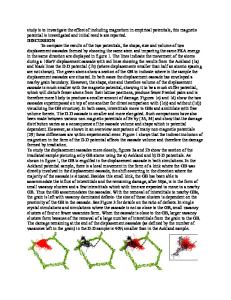Structure and Stability of Grain Boundaries in Molybdenum with Segregated Carbon Impurities
- PDF / 2,285,978 Bytes
- 6 Pages / 417.6 x 639 pts Page_size
- 68 Downloads / 259 Views
R. JANISCH, T. OCHS, A. MERKLE, C. ELSASSER. Max-Planck-lnstitut ffir Metallforschung, Seestrasse 92, D-70174 Stuttgart, Germany. ABSTRACT The segregation of interstitial impurities to symmetrical tilt grain boundaries (STGB) in bodycentered cubic transition metals is studied by means of ab-initio electronic-structure cahlulations based on the local density functional theory (LDFT). Segregation energies as well as changes in atomic and electronic structures at the E5 (310) [001] STGB in Mo caused by segregated interstitial C atoms are investigated. The results are compared to LDFT data obtained previously for the pure E5 (310) [001] STGB in Mo. Energetic stabilities and structural parameters calculated ab initio for several crystalline Molybdenum Carbide phases with cubic, tetragonal or hexagonal symmetries and different compositions, MoC., are reported and compared to recent high-resolution transmission electron microscopy (HRTEM) observations of MoC, intergranular films and precipitates formed by C segregation to a E5 (310) [001] STGB in a Mo bicrystal.
INTRODUCTION Impurity atoms like Boron, Carbon, Nitrogen etc. in body-centered cubic transition metals often tend to segregate to grain boundaries. They cause modifications of the local atomic and electronic structures at the interfaces and, consequently, they are influential on various polycrystalline properties like intergranular embrittlement, corrosion or grain-boundary diffusion. For reviews of interfacial segregation see, e.g., [1,2]. For the background of the present work, for instance the following two microscopic studies are relevant: Hashimoto et al. [3] investigated theoretically the influence of substitutional P and interstitial B impurities on the atomic structure of two symmetrical tilt grain boundaries (STGB) in a-Fe by means of atomistic simulations, using pair potentials for the interatomic interactions. P~nisson et al. [4] studied experimentally the segregation of C to a r,5(310)[001] STGB in a Mo bicrystal by high-resolution transmission electron microscopy (HRTEM). They observed the formation of MoC. phases (x: local C concentration) as precipitate particles in the bulk or at the interface and as thin interfacial layers, and they determined their crystalline structure. The topic of the present theoretical work is a microscopic analysis of the atomic structures and energetics of bulk Molybdenum Carbide phases and of interstitial C atoms segregated to E5(310)[001] STGB in Mo, employing an ab-initio electronic-structure method. In this paper, after a concise section about the theoretical ab-initio method, results for bulk MoC• phases and for the segregation of C to the E5(310)[001] STGB in Mo are presented in two separate sections.
AB-INITIO ELECTRONIC-STRUCTURE METHOD Our ab-initio electronic-structure method for crystalline materials is based on the local density functional theory (LDFT) [5]. Bulk phases as well as grain-boundaries are modeled by sul)ercells with periodic boundary conditions in all three spatial directions. The influence of th
Data Loading...










